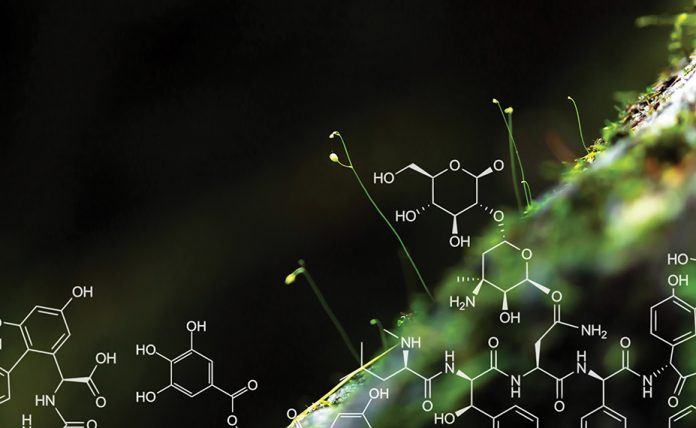Dr Sarah Hickingbottom, BioVale CEO
New chemical supply-chains derived from non-fossil feedstocks have been touted as the future for the past 20 years, but how much of this hype is commercial reality? How much pipedream? BioVale – Yorkshire and the Humber’s circular bioeconomy cluster – asked this question of their industry panel at this years’ inaugural ChemUK Supply Chain Expo (www.chemicalukexpo.com).
BioVale selected five experts along the innovation and commercial supply chain:
Dr Thomas Farmer (University of York’s Green Chemicals Centre of Excellence)
Professor Martin Akins (Green Lizard Technologies)
Dr Mark Gronnow (Biorenewables Development Centre)
Lucy Nattrass (Nouryon)
Richard Lambert (Braskem)
Chaired by BioVale’s CEO Dr Sarah Hickingbottom, herself a global bio-based chemical and feedstock expert, kicked off the conversation by answering the title question: yes, commercial bio-based chemicals are here now and at scale. (And we’re not talking oleochemicals, such as fatty alcohol ethoxylates or fatty acids, which are outside the scope of this discussion.)
But does today’s market size reflect its potential? “We’ve barely scraped the surface,” says Sarah. “Industrial biotechnology combined with chemical engineering has given the chemicals industry a toolbox never before available in history. That sounds hyperbole, but this toolbox verges on being limited only by our chemical imaginations – and the hard facts of the marketplace.”
We’ll return to the marketplace but first, exactly how good is this toolbox? Dr Farmer and his team at the University of York are at the forefront of research. “The world of industrial chemicals is expanding”, Thomas said. “Today’s industrial synthesis can – at scale – fully access oxygen. We’ve built an industry on carbon but tomorrow’s supply chains needn’t be confined to hydrocarbons. That’s a limit imposed by fossil feedstocks.” Today the chemicals industry can choose to break free of traditional thinking. Return to basics and imagine the ideal solvent, catalyst, reaction.
The Green Chemicals Centre of Excellence has done exactly this in collaboration with the Australian start-up, Circa Sustainable Chemicals. Collaboratively they have developed an industrial solvent not confined by yesterday’s thinking. Using a cellulose feedstock (e.g. waste agricultural residues) and non-biological processes, their novel solvent Cyrene is a technical replacement for dipolar aprotic solvents, e.g. DMF. The manufacturing process is energy neutral and environmentally benign. Cyrene represents new possibility: novel non-fossil, safe solvents that out-perform traditional counterparts. Circa’s UK-arm is co-located with BioVale and the Biorenewables Development Centre outside of York.
Another SME making waves is Professor Akin’s Green Lizard Technologies (GLT). A spin-out from Queen’s University Belfast, GLT specialises in identifying innovative technologies and accelerating their commercialisation. Having not only research specialties but an in-house strategy to bring innovation to the marketplace. It is a compelling offering.
But whilst the bio-based industry has a grassroots of emerging companies commercialising University-led innovation, unsurprisingly multinationals dominate at scale. Many of these are chemical companies – e.g. BASF, Dow, DuPont – but others have become chemical manufacturers in a move that a decade ago may have been laughed out of the boardroom. Today they leverage their previously unconceivable strategic advantage, namely bio-based feedstocks. Examples include Roquette, UPM, Corbion, Stora Enzo and Tate & Lyle. JVs frequently facilitate market entry and these new players are reshaping supply chains. Other new chemical manufacturers include the world’s dominant agri-conglomerates who had previously cut their teeth on biofuels. After all, as was said frequently a few years ago, “why produce a $1 fuel when you can have a $5 chemical?”
Braskem is the world’s largest bio-based chemicals producer. An almost unique example of a petrochemical megacorp owned by a conglomerate with a huge agricultural division producing sugar and bio-ethanol for biofuels. The ideal vertical integration to enable entry into the commodity chemical landscape. Braskem’s Brazilian bio-based ethylene and polyethylene plant produces 200,000 mt annually and their Green Plastic is present in more than 150 brands globally. You may even have some in your own home via brands such as Lego.
A different strategy is that of Nouryon (formerly AkzoNobel Specialty Chemicals). A specialty chemicals company with a sustainability heritage, including the use of bio-based raw materials. Their market-driven innovation and strong collaboration with start-ups propels new product launches and ensures they remain ahead of the curve.
Given world-class innovation, what’s holding the bio-based chemicals industry back? There’s the usual factors: scale-up failure; investment need; long led times; lack of early adopters; and the requirement of new supply chains. Professor Akins exposed another key issue when he told the ChemUK audience, “we are dependent on the availability of feedstocks and the economies of scale”. This is the defining challenge for bio-based chemicals: how to compete head-on with petrochemical plants built at a scale that will dwarf bio-based chemical plants even once mature?
Multinationals have an advantage (if not the final answer). They can adapt existing supply chains by working directly with end-users without needing them to invest themselves. End-user relationships will be vital to bio-based chemical success – creating bio-based market demand while simultaneously rejecting fossil. To achieve this, there are two diverging pathways: drop-in vs. novel.
Circa, GLT and Nouryon are predominately developing new process technologies and/or industrial chemicals. Their end-users will have had no prior experience with their novel bio-based chemicals. In contrast, drop-in bio-based chemicals are established petrochemicals but made from non-fossil feedstocks. As the name suggests, by producing the identical molecule, we can literally ‘drop’ the bio-based chemical into existing supply chains. This is how Braskem exploded onto the market. There are no new technologies in the production of bio-polyethylene. Though as Richard Lambert told ChemUK, “Even at the scale we operate at, it’s difficult to compete on price because there is no green premium.”
What would help? An audience member fueled discussion when they said, “we need government help to develop greener chemicals. We need policy changes.” The bio-based industry agrees. We need policy changes to spur demand, reward circularity and promote sustainability. Arguably, only policy can resolve petrochemical scale-disparity.
To bolster policy, we need investment to support innovation and commercialisation. And success will come from solving problems the chemicals industry tolerates because there is nothing better. Tell us your ideal solution and challenge us to achieve it. Thirdly, perhaps controversially, we would be significantly further advanced if SMEs had access to a managed bridge-fund-of-last-resort. Since 2015, notable market-driven, technologically-sound, feedstock-savvy SMEs have gone into administration for reasons of cash-flow. Commercial-scale plants left half built. Without change, this cycle will repeat.
To accelerate commercialisation, the industry needs scale-up support. Equipment costs are prohibitive, so open-access centres with facilities and expertise are fundamental. The UK has four pilot-scale centres (https://biopilotsuk.com) but crucially demonstration-scale remains wanting and this gap holds back domestic development. Yet, it is not all about equipment, Dr Mark Gronnow of the Biorenewables Development Centre highlighted why we need facilitated collaboration. “For green chemicals to become the future, we need a multidisciplinary team of people, chemists, biologists, engineers and more. We won’t solve this issue alone.” The bio-based sector may serve the chemical industry, but it is the result of merging disciplines and asking the question, what if?
What if the bio-based chemicals future isn’t now? Lucy Nattress sums it up starkly. “The future has to be now. Today’s global challenges mean we no longer have a choice.” We have done the incredible work of creating a new chemical toolbox fit for a non-fossil, sustainable future, now it is up to us to use it without caution.
With a focus on circularity, innovation and commercialisation in the bioeconomy, BioVale is a non-profit organisation supported by EU/UK grants and industry generosity. We are a key partner of ChemUK and are working towards next year’s Expo.
#biovale_cluster










